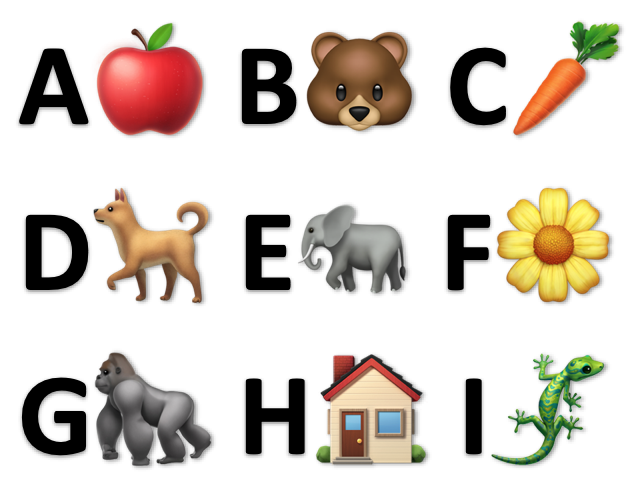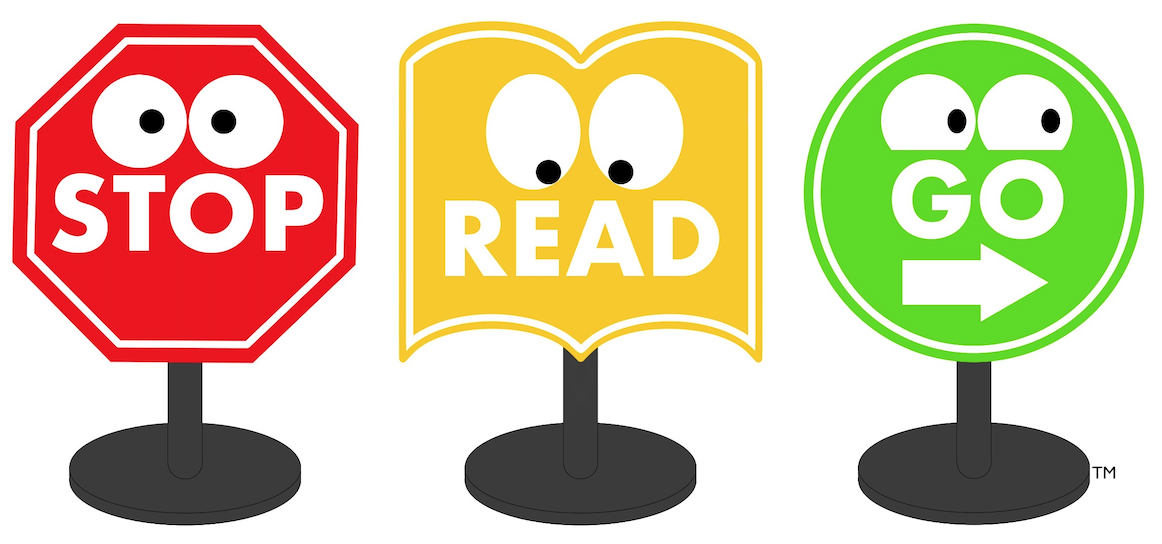The Alphabet Song was a well-intentioned creation to help children learn to read, but it has actually become the very thing that delays the process of learning to read. It is a disservice to children because instead of helping them and taking them a step closer to reading, it takes them in a totally different and opposite direction.
Why?
Because the alphabet song teaches the names of letters, instead of their sounds.
You can’t tell a child that the letter A is pronounced /ˈeɪ/ and then put an image of an Apple next to it and expect the child not to question your sanity when you tell him: “/ˈeɪ/ is for Apple” (since that word doesn’t have the /ˈeɪ/ sound in it). Similarly, you can’t say the letter C is pronounced /ˈsiː/ and put an image of a Cat and say “/ˈsiː/ is for Cat” (since that word doesn’t have the /ˈsiː/ sound in it).
Instead, you should say “/Ah/ is for Apple” and “/Kah/ is for Cat” which makes more sense since they can actually hear the sound inside the word.

Same goes for other letters, such as:
- E: Instead of /ˈiː/ is for Elephant, you should say /Eh/ is for Elephant
- G: Instead of /ˈdʒiː/ is for Goat, you should say /Goh/ is for Goat
- I: Instead of /ˈaɪ/ is for Igloo, you should say /EE/ is for Igloo
- and so on…
This is why teaching the alphabet song with the names of the letters is such a bad idea. It makes no sense to children and creates unnecessary confusion from the start. Confusion leads to fear, and fear leads to avoidance. It makes them run away from reading, instead of towards it.
Now, you wonder why don’t we teach them the sounds of the letters instead of the name of the letters?
Well, this is definitively a better idea. However, you would still end up in a similar situation when you say the letter /A/ (or Ah) is for Acorn and Angel or that the letter /C/ (or Kah) is for Circle and Cereal.
Once again, it makes no sense to a child!
Ok, then, why don’t we teach them both the letter names and their sounds? That should fix it, right?
No. Because the rules change when you encounter those letters in the middle or at the end of words.
In the English language, almost every letter of the Alphabet actually has more than just 1 sound and sometimes no sound at all! The letters are not static, but dynamic, because they change based on the letters that surround them or the combinations of letters. Sometimes, there is no explanation at all for why the letters are pronounced a certain way, so we just call them exceptions.
Here is just a handful of examples that create confusion in kids when trying to read words letter by letter (sounding out words), either by using the name of the letter or its sound:
- Ear, bear, eat, break: where the E and A are pronounced differently each time.
- Cough, dough, rough, bought: where the ough is pronounced differently each time.
- Climb, lamb, debt, plumber: where the 2nd letter of the alphabet, the letter B, suddenly disappears!
- Night, might: where the letters G and H, no longer say anything.
- Calm, talk, walk: Again, where did the L go? And what about the letter A? It is neither saying its name nor its sound.
- School, choo choo train, character, chain, stomach, peach: Where the ch changes to a “k” when convenient.
- Which, who, wrist, sword, two: I think the letter W has a multiple personality syndrome.
Ha! Forget about the name of the letter or even the sound of the letter when there are so many silent letters!
Basically, what I am trying to say is that the very same rules that we want our children to follow (language rules in this case) fall apart in front of our own eyes. Rules are supposed to bring a sense of order, security and reliability. And exceptions to those rules are supposed to happen in very rare occasions, but it seems that there are more exceptions than the rules themselves.
And with children, who tend to take everything literally, you need to have a reliable and fool-proof method if we expect them to follow the rules we are imposing on them.
Let me be clear. I’m not against teaching these language rules. What I’m against is having to teach these rules as a pre-requisite to actually reading.
Reading is just a skill, similar to walking, similar to talking. We did not have to teach a 1 year old the inner workings of our legs in order for him/her to start walking on his/her own. We did not have to teach him/her the letters of the alphabet and the rules of speech in order for him/her to start talking on his/her own.
You wouldn’t want to wait until your child went to school to learn about walking or talking. No, they go to school already knowing how to walk and talk.
We need to start teaching children to read before we teach them the inner workings of the language. And we need to start them as early as toddlers, if not sooner. In a similar way they learned to walk and talk.
But, how can they learn to read without teaching them the alphabet or the language rules?
Reading can easily be incorporated into a child’s daily life, play and activities so that it becomes almost as natural as learning to walk or talk.
By being able to read the full words (call them sight words if you wish), even if by pure memorization, the child can start using this skill to his/her benefit, immediately. This will allow them to seek knowledge on their own based on their own interests. It can transform them into independent learners without having to rely on others to read to them to gain new information.
We should give the gift of reading to children as early as possible so they can start exploring their world and surroundings and quench their thirst for information while they still have the natural desire to learn.
The secret to learning to read is consistent, repetitive and meaningful exposure to the written language from an early age.
What can you do to help?
- Consistent: Create a habit of reading to your child every single day (morning, afternoon, night) and label things around your home.
- Repetitive: Read and re-read simple books (with 1 short sentence per page) and point to every word with your finger. Every time you walk by or use a labeled object, point to it and read it aloud to your child.
- Meaningful: Make reading meaningful by correlating the written words to an action or an object that they are familiar with (i.e. point to the STOP sign, say “stop” and show how cars and people must stop).
- Early: Start early, even before your baby is able to speak in full sentences.
So, don’t delay and don’t put obstacles in their way. Simply read with your children, show them the purpose of reading, and surround them with words every chance you get!
Feel free to explore my other BLOG posts for more tips and inspiration. And don’t forget to check out my SHOP, where you can find unique products to make learning to read a more tangible (something they can see, hear, touch, even taste or smell) and intuitive (something that is obvious, self-evident and self-explanatory) experience for your little ones.

P.S: I know, in the world we live in, it is almost impossible to avoid the Alphabet song! And I don’t really have an issue with the signing itself. I actually think, singing is a great way to learn because it has the built-in repetition, pattern recognition, memorization and meaning that we want. So as an alternative, or at least as a way to counteract it, you should at least sing the phonetic version of the alphabet song. Or better yet, create your own song!
- So instead of this: /ˈeɪ/ /ˈbiː/ /ˈsiː/ /ˈdiː/ /ˈiː/ /ˈɛf/ /ˈdʒiː/ and so on.
- Try this: /Ah/ /Bah/ /Kah/ /Dah/ /Eh/ /Fah/ /Gah/ and so on. Do this with the same tune/melody.
- Or this: AhAhAhAh…Apple, BahBahBah…Banana, CahCahCahCah…Cat, DohDohDohDoh…Dog, EhEhEhEh…Elephant, FFFFFF…Fox, GohGohGoh…Gorilla and so on.

